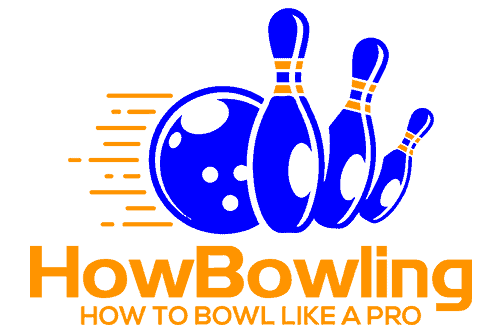The bowling lane may seem like a simple collection of wooden boards to someone who is new to this sport. However, professional bowlers see the lane divided into different parts, each having a purpose of its own.
The area on the bowling lane where the bowler aligns himself before throwing the ball is known as the approach area. It spans over an approximate distance of 15 feet; however, this distance is not included in the total length of a bowling lane.
The standard length of a bowling lane is measured to be 60 feet. If we add the 15-feet approach area and the back service area to the total length of the lane, it becomes approximately 86.5-feet long.
Keep reading on to find out where the approach area is located, the purpose of this part on the bowling lane, and the most common bowling approaches used by pro bowlers.

Location of the Approach Area On a Bowling Lane
If you study a bowling lane, the starting point you will encounter is the approach area. It leads to a foul line that cannot be exceeded when throwing or releasing the ball.
The first 3 feet of the approach area comprise dots in two rows, and these are known as foot markers. These dots are used for proper alignment and to target one of the seven arrows (also known as the aiming arrows). Just before the foul line, there is another set of dots where your final step will land before you release the ball.
Usually, a bowler aims for the second arrow from the right or the left, but your position on the dots in the approach area determines which pin will be knocked down.
Read more here: How to Aim in Bowling.
In the sections that follow, we will discuss why there is a need for an approach area on the bowling lane. In addition, we will also look at different approach techniques used by pro bowlers that determine how good they are at this game.
What is the Purpose of the Approach Area in Bowling?
The 15-feet long approach area is designed to allow the bowler to apply rotation and take aim. It also allows him to impart speed to his ball before releasing it over the lane.
The key is to create momentum before you release the ball from your hand. You must decide how many steps you want to take in the approach area to gain the desired momentum.
Your approach and bowling swing primarily determine how skillful you are at this sport. As a pro bowler, you should not look at the pins when throwing the ball. Instead, you focus on your approach and use the target arrows to knock down a specific combination of pins.
The importance of the approach in bowling can be judged by the fact that if you take it for granted, it’s only your luck that will save you from scoring low. Quality shots are possible only when you adopt the right approach and make sure there is no unnecessary tension or strain.
Since your bowling approach determines the outcome of your shot, the approach area is quite an essential part of a bowling lane. It offers enough space for the bowler to take steps to adjust his position and align his feet for a targeted shot.
It is possible to improve your approach if you learn to practice a specific technique. The number of steps to take in the approach area should match your normal walking stride. This way, you will be able to deliver consistently. Also, remember to keep your hand and wrist strong during the approach and keep your knees slightly bent.
Types of Bowling Approaches
Now that we have discussed the approach area, it’s time to discuss the types of bowling approaches used by professional bowlers. Since these approaches make use of the approach area, it’s important to mention them.
There are two basic types of bowling approaches known as the 4-step and 5-step bowling approaches, respectively. Either of these techniques can be used depending on the situation. These methods comprise a fixed number of “steps” you take on the approach area to deliver your ball.
In a 4-step approach, you start with your right foot if you’re right-handed and your left foot if you’re left-handed. In this fashion, your next step will use your left foot, then right again, and finally left. The opposite foot from your bowling hand will be on the front when you release the ball.
The steps in this type of approach are push-away, down-string, backswing, and slide and release. Together these steps determine the speed of your delivery, the rotational speed and angle of the ball, and how far from the foul line the ball will touch the bowling lane.
Depending on your delivery style, you will use either moderately high or high backswing to achieve modest to high ball rotation rates.
During the steps, you will swing the ball continuously in a pendulum motion and finally release it at your final step.
In a 5-step approach, the first step is termed “the trigger step.” This is a slow but decisive step because it is used not just to step into the steps to follow but also to start swinging the ball. The rest of the steps in this type of bowling approach are similar to a 4-step approach.
There is also a 3-step approach, which is less common but still usable. This is a method where you take your first step with your lead foot (corresponding to the hand holding the ball) and then two more steps to get in position.
Read more here about Bowling steps and techniques here: Bowling Approach: Steps and Techniques
All these steps are supposed to be taken within the approach area and before the foul line. If your foot touches the foul line, it is termed a “foul.”
Whatever approach you adopt, make sure you walk towards the foul line naturally. The 4-step approach to bowling is more common among bowlers as it allows you to be relaxed and stress-free.




